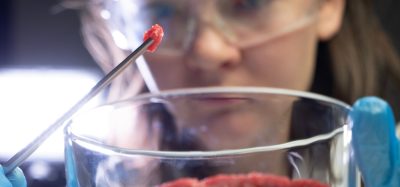Biosensor developed to test freshness of meat
- Like
- Digg
- Del
- Tumblr
- VKontakte
- Buffer
- Love This
- Odnoklassniki
- Meneame
- Blogger
- Amazon
- Yahoo Mail
- Gmail
- AOL
- Newsvine
- HackerNews
- Evernote
- MySpace
- Mail.ru
- Viadeo
- Line
- Comments
- Yummly
- SMS
- Viber
- Telegram
- Subscribe
- Skype
- Facebook Messenger
- Kakao
- LiveJournal
- Yammer
- Edgar
- Fintel
- Mix
- Instapaper
- Copy Link
Posted: 21 February 2024 | Grace Galler | No comments yet
A team of scientists have created a biosensor using graphene electrodes modified by zinc oxide nanoparticles to measure meat freshness.


Researchers from the Vietnam Academy of Science and Technology, VNU University of Science, Hanoi University of Science and Technology, and the Russian Academy of Sciences have developed a biosensor that can measure the freshness of meat.
The biosensor works by using graphene electrodes modified by zinc oxide nanoparticles to measure HXA (Hypoxanthine). Published in AIP Advances, the study team demonstrated the biosensors capabilities and efficiency on pork meat.
In order to determine a meat products safety, the freshness of animal meat is a key property to evaluate its quality and standard. In the twenty first century, meat can be exported across the work and consumed long after an animal dies.
“As global meat consumption rates increase, so too does the demand for effective measures for its age,” explained the team.
“Despite the technological advances keeping meat fresh for as long as possible, certain aging processes are unavoidable,” they continued.
Adenosine triphosphate (ATP) is a molecule produced by breathing and responsible for providing energy to cells. When an animal stops breathing, ATP synthesis also stops, and the existing molecules decompose into acid, first diminishing flavour and then having an impact on the safety of the meat. HXA and xanthine are intermediate steps in this transition, and according to the team, assessing their prevalence in meat indicates its freshness.
The scientists acknowledge that many HXA sensing methods currently exist, but can prove “costly and time-consuming and require specialists”.
“In comparison to modern food-testing methods, like high-performance liquid chromatography, gas chromatography, mass spectrometry, atomic and molecular spectroscopy, and nuclear magnetic resonance spectroscopy, biosensors like our sensor offer superior advantages in time, portability, high sensitivity, and selectivity,” said Ngo Thi Hong Le, Author of the study.
The biosensor was produced using a polyimide film, which was converted into porous graphene using a pulsed laser. The added zinc oxide nanoparticles attract the HXA molecules to the electrode surface. When HXA interacted with the electrode, it oxidised and transfers its electrons, spiking the electrode’s voltage.
“The linear relationship between HXA and voltage increase enables easy determination of HXA content,” noted the team.
As a way to assess the sensor’s capabilities, the researchers tested solutions with known quantities of HXA. Then the researchers measured the biosensor’s practicality using pork tenderloins purchased from a supermarket. According to the study, sensor performed with “over 98 percent accuracy, favourable detection range, and low detection limit”.
“In Vietnam, pork is the most consumed meat. Therefore, pork quality monitoring is one of the important requirements in the food industry in our country, which is why we prioritised it,” concluded Le.
However, the scientists say that their new biosensor can be used on more meats than just pork. In fact, they claim “any meat product” can be tested.
Related topics
Food Safety, Health & Nutrition, Quality analysis & quality control (QA/QC), Research & development








